Mengdi Qian
Mengdi Qian from Sichuan University, has joined our group to do a PhD Thesis (2014 – 2018).
Mengdi Qian from Sichuan University, has joined our group to do a PhD Thesis (2014 – 2018).
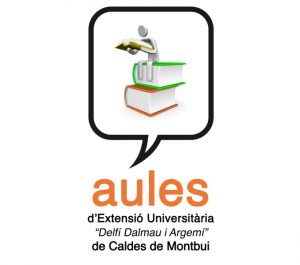
Josep Fontcuberta. Lecture on “Les nanotecnologies a la societat de la Informació” a Aula Extensió Universitaria de Caldes. Caldes de Montbui, 21.11.2018
M. Qian, I. Fina, F. Sánchez, and J. Fontcuberta
Adv. Electron. Mater. 5, 1800407, 2019
ABSTRACT
The resistive switching associated with polarization reversal is studied in detail in ferroelectric BaTiO3 tunnel junctions, with focus on the dynamics of the ferroelectric domain switching. It is observed that the transition between the high‐resistance state (HRS) and the low‐resistance state (LRS) is largely asymmetric being smooth from LRS to HRS, but proceeds via avalanches in the HRS‐to‐LRS transitions. It is shown that this distinct behavior is related to the presence of an imprint field in the junction and has important consequences on the junction’s performance.
L Vistoli, W Wang, A Sander, Q Zhu, B Casals, R Cichelero, A Barthélémy, S Fusil, G Herranz, S Valencia, R Abrudan, E Weschke, K Nakazawa, H Kohno, J Santamaria, W Wu, V Garcia & M Bibes
Nature Physics 15, 67 – 72 (2019)
https://doi.org/10.1038/s41567-018-0307-5
ABSTRACT
Strong electronic correlations can produce remarkable phenomena such as metal–insulator transitions and greatly enhance superconductivity, thermoelectricity or optical nonlinearity. In correlated systems, spatially varying charge textures also amplify magnetoelectric effects or electroresistance in mesostructures. However, how spatially varying spin textures may influence electron transport in the presence of correlations remains unclear. Here we demonstrate a very large topological Hall effect (THE) in thin films of a lightly electron-doped charge-transfer insulator, (Ca,Ce)MnO3. Magnetic force microscopy reveals the presence of magnetic bubbles, whose density as a function of magnetic field peaks near the THE maximum. The THE critically depends on carrier concentration and diverges at low doping, near the metal–insulator transition. We discuss the strong amplification of the THE by correlation effects and give perspectives for its non-volatile control by electric fields.
M. Foerster , L. Aballe , J. M. Hernàndez , and F. Macià
MRS BULLETIN , volume 43, (2018)
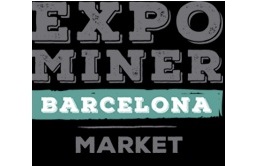
Josep Fontcuberta. Lecturing for broad audience on “The Magnetism of Magnets” at EXPOMINER 2018 (Barcelona) (10-11-2018)
I. Fina, A. Quintana, X. Martí, F. Sánchez, M. Foerster, L. Aballe, J. Sort, and
Josep Fontcuberta
Applied Physics Letters 113, 152901 (2018)
Nit Jove de la Recerca a CosmoCaixa. Josep Fontcuberta participa al Scientific Corner, el divendres 28 de setembre, a partir de 21:30h amb una xerrada sobre “Electrons i espins: una parella més eficient si està trencada”
Within the Severo Ochoa programme, 4 PhD fellowships are offered by the ICMAB-CSIC for the academic year 2018-2019.
DEADLINE FOR APPLICATION: 11 OCTOBER 2018
ICMAB-CSIC is an internationally renowned public research institute in Advanced Functional Materials integrated in the National Research Council of Spain (CSIC). The mission of ICMAB is to generate new knowledge in Materials Science through excellent scientific research useful for society and industry.ICMAB has 60 permanent and 90 non-permanent scientists and more than 220 people divided in eight Research Groups. The center has outstanding international competitiveness, with a large number of high impact articles and citations and European research projects participation (9 ERC grants at present), with the strongest international leadership position in the specific domains of Functional molecular, supramolecular and oxide materials. The center has been awarded with the label of Center of Excellence “Severo Ochoa” by the Spanish Ministry in 2016.
The Strategic Research Program includes five mission-oriented Research Lines to face three social grand-challenges: clean and secure energy, smart and sustainable electronics and smart nanomedicine. The strategic Research Lines are:
1/ Energy storage and conversion
2/ Superconductors for power applicaations
3/ Oxide electronics
4/ Molecular electronics
5/ Multifunctional nanostructured biomaterials
The ICMAB – CSIC is one of the top research institutions named as a Severo Ochoa Research Centre by the Ministry of Economy and Competitiveness (MINECO) in charge of research and innovation policy in Spain, which recognizes excellence at the highest international level in terms of research, training, human resources, outreach and technology transfer. The Severo Ochoa award provides 4 M€ over 2016-2019 to implement ICMAB’s Research and Human Resources Programmes.
http://icmab.es/icmab-phd-programme-severo-ochoa-fellowships-2018-2019
“Artificial sensory neuron networks excited by optical stimuli”
G. Herranz
Breu descripció dels objectius (Brief description of the objectives):
We study the photoconductive properties of some quantum wells (QWs), whereby the system changes its conductance in a plastic way, retaining memory from its past history, using light as stimulus. We are investigating this phenomenon to replicate in a solid-state system the synaptic plasticity observed in biological neuronal systems.
Breu descripció de la metodologia (Brief description of the methodology):
The candidate will have access to our optical laboratory, which includes high-resolution microscopy using wavelengths in the visible, with accurate control of irradiance and optical stimuli controlled to timescales down the microsecond. The laboratory has deep expertise in magnetotransport and optical characterization of quantum wells. The candidate will benefit also from training in the use of Python-based algorithms to model neural networks.
“Nanophotonics: metamaterials and topological structures”
G. Herranz
Breu descripció dels objectius (Brief description of the objectives):
Robust propagation of spatially confined electromagnetic waves is indispensable for the development of on-chip optical communications in photonic circuitry. With this in mind, we investigate approaches based on special topologies in the wavevector space that can enable propagation of helical edge propagation of modes that flow unimpeded by imperfections or back-reflections.
Breu descripció de la metodologia (Brief description of the methodology):
The candidate will have access to our optical laboratory, which includes high-resolution microscopy and angle-resolved spectroscopy in the near-IR-VIS range. In particular, he/she will be acquainted with angle-resolved reflectance/transmission spectroscopy, which can resolve w-k reciprocal space maps from near-IR to violet, with scanning beam sizes down to few microns. This methodology enables the direct visualization photonic/plasmonic states, including edge states. The candidate may also benefit also from training in the use finite-difference time-domain calculations to explore topologically nontrivial photonic crystal lattices.
“Neuromorphic computing with ferroelectric materials”
I. Fina.
Neurons in the brain process and store information in a way that radically differs from conventional computers. Although algorithms are being developed to emulate brain functioning, this is only (marginaly) achieved at expense of unacceptable energy consumption. Ferroelectric tunnel devices appear as a potential candidate to replicate neuromorphic functions. The candidate will join a team working on this direction.
To get the responsibility of this cutting edge project, we are looking for candidates finishing a degree on physics, materials science, electrical or related areas, and having excellent academic records. We search for a candidate with strong scientific curiosity and highly motivated to join a very stimulating project of potentially large social impact. Skills in communication, including fluent English, are required.
“Study of ferroelectric materials for applications in photovoltaics”
I. Fina
The proposed TFG will carefully analyze the photoelectric response of ferroelectric junction under different conditions using state-of-the-art characterization devices. The student will get wide experience on dielectric and photoelectric characterization, not only required for technological perspectives like the one proposed for his/her TFG, also required for emerging technological areas such as solar cells.
The candidate is expected to be enthusiastic on experimental physics. He/she will have access to our advanced electrical characterization laboratory, which includes optical excitation tools. The candidate will follow an intensive training, so as to ensure a solid understanding of the techniques that enable to understand the interplay between light ant ferroelectricity.
“Characterization of antiferromagnetic/ferromagnetic materials for memory applications”
I. Fina
The TFG involves the characterization of antiferromagnetic materials using microscopic proximity techniques. Antiferromagnetic materials can show the ability to store magnetic information at the same time that they can make it invisible. These effects will be those that the TFG will investigate in micro-/nano-patterned device structures.
Enthusiasm about applied and experimental physics, and interest to develop skills on characterization, reporting, communication, etc.
“New epitaxial ferroelectric materials in thin film form”
I. Fina
Ferroelectric materials are already used for a wide range of applications. However, industry defines new challenges for ferroelectric materials that well-known existing ferroelectric materials are not capable to solve. Thus, new ferroelectric materials are needed to be investigated. We propose to characterize novel ferroelectric materials in epitaxial form.
Enthusiasm about applied and experimental physics, and interest to develop skills on characterization, reporting, communication, etc.
Ignasi Fina gave two lectures about “Nanoscience and Nanotechnology” and “Information and communication technologies” at Universitat Catalana d’Estiud on August 22-23th.
See the event link: http://uce.cat/responsive/ctecnologia_Prada_2018.html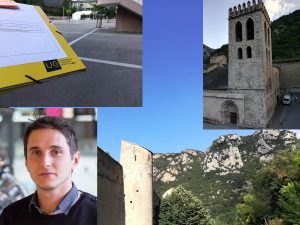

J. Lyu, I. Fina, R. Solanas, J. Fontcuberta and F. Sanchez
CrystEngComm (2018)
J. Lyu, I. Fina, R. Solanas, J. Fontcuberta, and F. Sánchez
Appl. Phys. Lett. 113, 082902 (2018)
J. Lyu, S. Estandía, J. Gazquez, M. F. Chisholm, I. Fina, N. Dix, J. Fontcuberta, and F. Sánchez
ACS Applied Materials & Interfaces
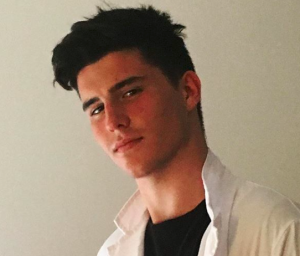

“My main interests are food, sport and politics. I am staying at ICMAB for all July, studying ferroelectric memristors and spin currents, tutored by Dr. Ferran Macià”
Josep Fontcuberta imparteix una classe sobre “Nanotecnologies per a les comunicacions i la informació” – en el marc del Curs: “CIÈNCIA I TECNOLOGIA” de la Universitat Catalana d’Estiu (50ena edició, Manresa, 7 de juliol 2018).
Guillermo Prieto, who did his bachelor thesis with Ignasi Fina working on ferroelectrics, got the maximum mark (10) with honors for his work “Electroresistance in non-tunnelling ferroelectric junctions”. The bachelor work was defended at Universitat de Barcelona. 

Our former Master student on Photovoltaic ferroelectric ; Sergio Gonzalez Casals, has accepted an offer to initiate his PhD on related topics at INL (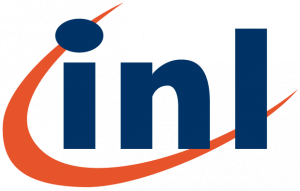

Congratulations!
Fanmao Liu, Ignasi Fina, Guillaume Sauthier, Florencio Sánchez, Andrew M. Rappe, and Josep Fontcuberta
ACS Appl. Mater. Interfaces, Article ASAP, June 18, 2018
Hi, I’m Peter, a third year physics student from Heidelberg, Germany. I will be doing experiments on spintronics during July 2018 and the beginning of August. Other than that I’ll spend my time reading at the beach and exploring Barcelona and its surroundings. See you around!
Nahuel Statuto, Joan Manel Hernàndez , Andrew D Kent and Ferran Macià
Nanotechnology, 29 325302 (2018)
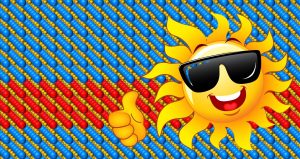

“NANOingeniería de ÓXIdos para el mayor aprovechamiento de la energía SOLar usando rutas no convencionales (NANOXISOL)” (Oxides nanoengineering for improvement of photovoltaic efficiency using non-conventional routes) proposed by Ignasi Fina has been awarded by Comfuturo program in its second edition.
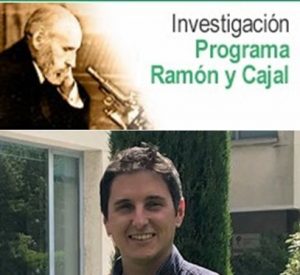

Blai Casals, Andrea Schiaffino, Arianna Casiraghi, Sampo J. Hämäläinen, Diego López González, Sebastiaan van Dijken, Massimiliano Stengel, and Gervasi Herranz
J. Hang, C. Hahn, N. Statuto, F. Macià, A. D. Kent
Scientific Reports 8, 6847 (2018)
MULFOX group has been awarded with a MIT-Spain “La Caixa” Foundation Seed Fund. In a press release that took place on 18th April at Palau Macaya (Barcelona), the PI of the project (Ignasi Fina) was interviewed by local radio, and he commented on the new investigations on the use of semiconducting ferroelectrics for photoelectric applications that the funded project proposes. We hope fruitful collaboration with MIT.
Read the news appeared in the media:
H. B. Vasili, M. Gamino, J. Gàzquez, F. Sánchez, M. Valvidares, P. Gargiani, E. Pellegrin, and J. Fontcuberta.
ACS Appl. Mater. Interfaces 2018, 10, 12031−12041
https://pubs.acs.org/doi/abs/10.1021/acsami.8b00384
We announce the forthcoming COST TO-BE Spring Meeting 2018 to be organized by the Institut de Ciència de Materials de Barcelona and held in the Eden Roc Hotel at Sant Feliu de Guíxols, north of Barcelona, 12th–14th March 2018
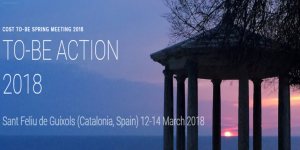

The meeting is going to be the last in a series of meetings organized by the COST Action TO-BE (for Towards Oxide-Based Electronics). It aims to network researchers working in the field of the science and technology of transition-metal oxides and, to help them sharing their expertise, defining future strategies, and pursuing jointly funding opportunities.
Participation at the meeting is open to scientists, both from the public research sector and from the private sector. It is NOT restricted to the members of the Action. Non-EU participants are also very welcome to attend. One of the actions undertaken by TO-BE is to promote building a Roadmap “Towards Oxide Electronics” that we expect releasing early 2018. The forthcoming TO-BE Spring Meeting would be the opportunity for contributors to present their views on different aspects of oxide electronics.
The meeting will feature invited presentations delivered by contributors to the Roadmap, as well as flash and poster contributions.
Submission of abstracts will be open on 1st December 2017. Please submit your work by 1st January 2018.
For further information, please visit the website:
https://congresses.icmab.es/tobe2018/
Thanks to the support of the COST TO-BE Action, participation is free of charge. However, registration is necessary. See:
https://congresses.icmab.es/tobe2018/
We sincerely hope that you will be able to attend the COST TO-BE Spring Meeting 2018 and we look forward to seeing you in March 2018
Finally, just after the COST TO-BE Spring Meeting 2018, the COST organized school on “Oxide-based Electronic Technologies” (15th-17th March) will be held at the same place (Hotel Eden Roc, Sant Feliu de Guíxols). Information will be posted soon.
Sincerely yours,
Mariona Coll and Josep Fontcuberta
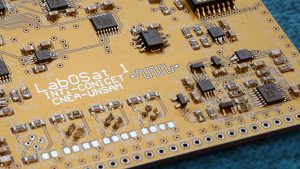

Oxides flight high. Oxide-based non-volatile memories, fabricated and integrated by our colleague Pablo Levy and his team in CNEA (Buenos Aires), were successfully launched to space on 2th-02-2018 and are now orbiting the Earth. Congratulations !
http://www.conicet.gov.ar/labosat-tecnologia-argentina-en-el-espacio/
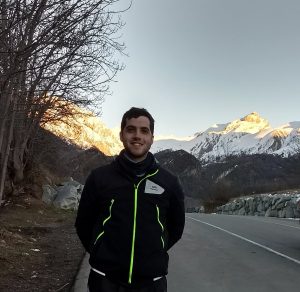

Hi! I’m Agustin, and I’m a PhD student from Buenos Aires, Argentina. This is my first time in Barcelona. I’m going to be here for one month and I will learn how to characterize ferroelectric thin films with the group of Josep Fontcuberta. In my free time I like playing videogames, reading a lot of books and spending time with my girlfriend and my friends.
February, 2018.


All the best for them!
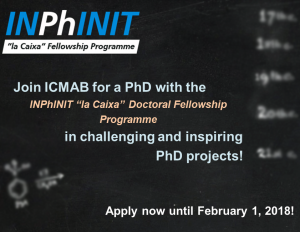

INPhINIT, ”la Caixa” Doctoral Fellowship Programme is devoted to attract international Early-Stage Researchers to top Spanish research centres, offering an attractive and competitive environment for excellent research.
INPhINIT offers a 3-year employment contract, including trasnational, intersectoral and interdisciplinary mobility opportunities, and attend a full range of complementary training courses and workshops.
Within this Program, we are looking for excellent candidates to join the Multifunctional Thin Films and Complex Oxides lab to work on these research projects:
1.- Photo-writing in ferroelectric green memory devices
2.- Pure spin currents: a toggle for energy-efficient control of magnetic memories
3.- Breaking symmetry and conventional wisdoms for efficient photovoltaics
4.- Low-Loss Multifunctional Plasmonic Metamaterials
5.- Dynamical modulation of electron spins with microwaves
6.- Bioinspired Magnetic Nanodevices
7.- Ferroelectric nano-oscillators for pattern recognition and social networks
Open call for the INPhINIT “La Caixa” Doctoral Fellowship Programme – Opportunities at ICMAB-CSIC


Manuel Bibes has beeb awarded with the Descartes-Huygens Prize 2017 as announced by the Royal Netherlands Academy of Arts and Sciences (KNAW), the Embassy of France in the Netherlands and the Académie des Sciences, for their outstanding research research in nanoscience and their contribution to Franco-Dutch relations. Congratulations Manu!
http://www.academie-sciences.fr/fr/Prix-internationaux/prix-descartes-huygens.html
J. Lyu, I. Fina, R. Solanas, J. Fontcuberta, and F. Sánchez
Scientific Reports 8, 495 (2018)
Doi:10.1038/s41598-017-18842-5
PhD student Halyna Volkova is doing her PhD thesis in Université Paris-Saclay under the supervision of B. Dkhil and I.C. Infante. She will stay in our group working on growth and photovoltaic characterization of ferroelectric materials during 2 months (2018, January – March).
We hope you the best.


We are happy to announce that this year I. Fina from MULFOX and R. Jaramillo from Massachusetts Institute of Technology will start a new collaborative project funded by “la Caixa” focus on the investigation of new materials for photovoltaic applications.